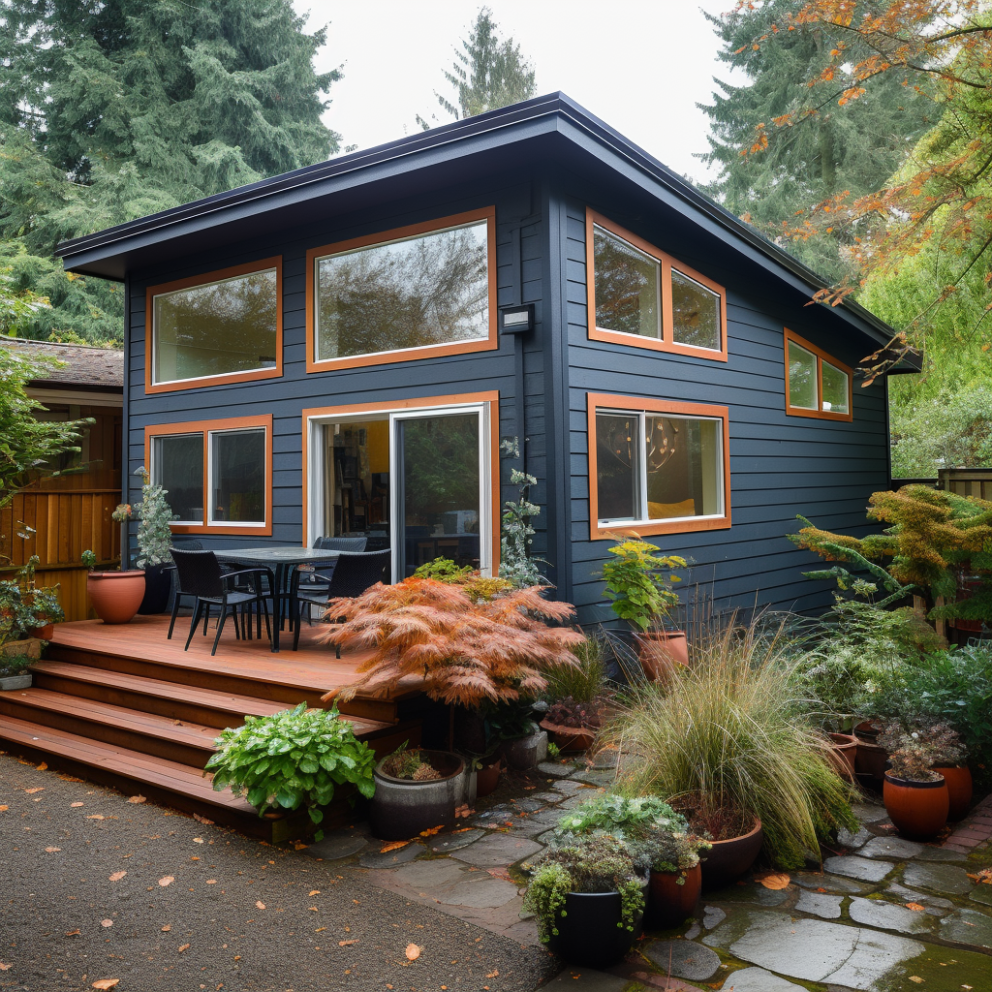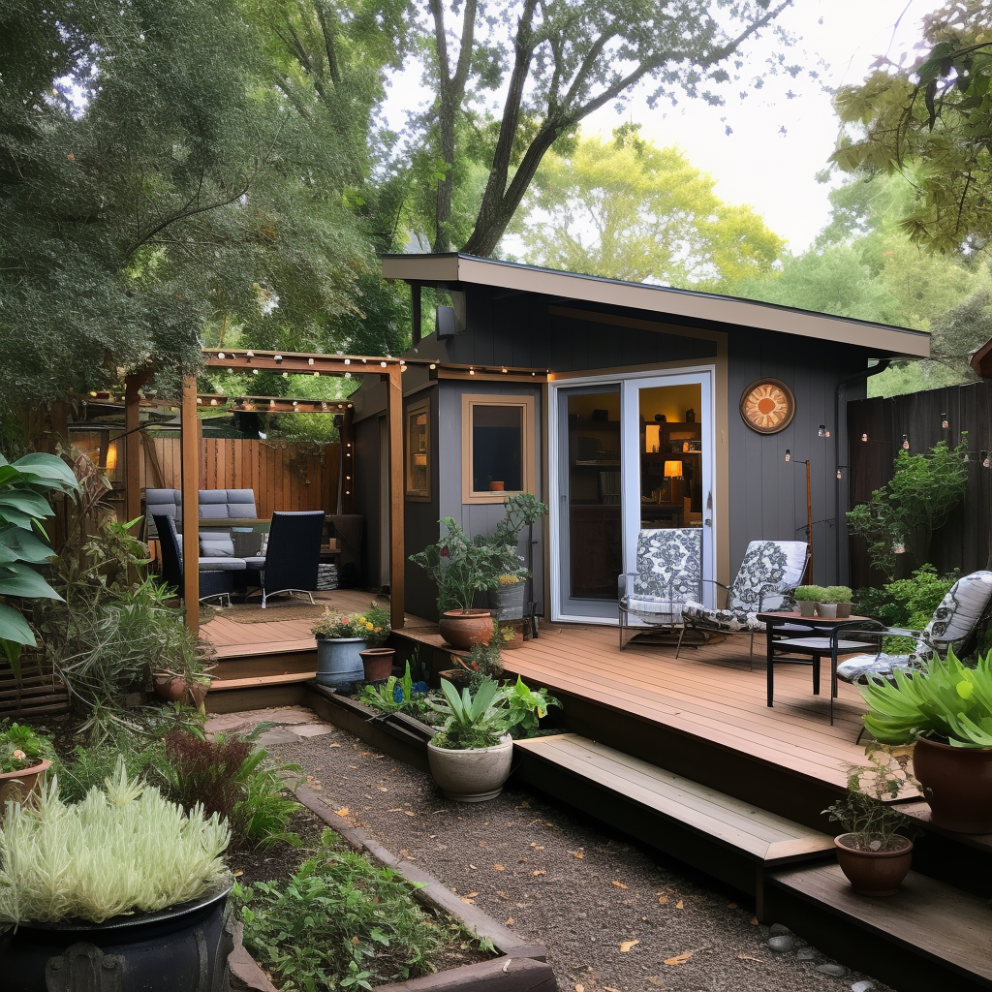You might think that the names for accessory dwelling units are already too long .... ADU, granny-flat, in-law suite or casita are just a few of the many names for accessory dwelling units.
What is a JADU, then?
California single-family homeowners can add one ADU or one JADU onto their property. This is a wonderful opportunity but it has also caused some confusion.
What is a JADU?
- Size - 500 sq. ft. max.
- 150 sq. Only if you have a jurisdiction that allows this. California state law states that the extra 150 square feet applies only to ADUs.
- Location - Must occur within an existing or proposed single-family home or accessory structure such as a detached garage. According to the California Department of Housing & Community Development, the accessory structure, like a garage, must be attached to the house to qualify.
- Separate Entrance - A separate entry (an exterior access for the JADU) must be made from the single-family dwelling, whether it's proposed or already built.
- Interior entry into the primary home - is not required.
- Parking - A JADU does not require parking unless you convert your garage. In that case, the parking will need to be replaced.
- Bathroom - The bathroom can be separate or shared by the single-family dwelling.
- Kitchen - Must comply with "Efficiency Kitchen requirements":
- The size of the counter and the storage cabinets should be proportionate to the size of your kitchen.
- Cooking appliances with 240-volt outlets allowed
- There is no restriction on the maximum diameter of waste lines
JADU vs ADU? Pros and cons
Although Junior ADUs are a great option, they do have their limitations.


THE ADVANTAGES
Building a Junior ADU by sharing utilities and sanitation is very cheap and easy. In some extreme cases, you can even add a small kitchenette and a door on the outside.
Depending on your jurisdiction, you may also save money on permitting because some areas say, "Junior units are not separate dwelling units and don't require building or fire code upgrades..."
Square footage is the last advantage on this list. It has a large asterisk because it depends on your jurisdiction. Some cities and counties permit homeowners to convert garages or non-living spaces into square footage.
It is important to note that this is particularly true in cities like Los Angeles, where most homes are built up to their maximum allowed square footage. Garage conversion using JADU can be a great way to increase the square footage of your home despite any restrictions (if the local jurisdiction permits it).
THE DISADVANTAGES
Owner occupancy is a major drawback for those who want to build a rental or keep the option of renting open in the future.
Size - A smaller garage will not be a problem. The 500-square-foot limit isn't too restrictive either. Your average two-car garage measures 576 square feet.
Permit costs are a disadvantage compared to non-ADUs. While the cost of a Junior ADU may be less than that of a conventional ADU, it can still be high depending on your city/county.
When should you build a Junior ADU?
You can make an informed decision once you understand how the city and county interpret Junior Accessory Dwelling Units regulations.
These are some questions you should ask yourself.
- Are you concerned about the requirement of owner occupancy? A JADU may not be the best option if you are concerned about owner occupancy.
- You are building an ADU detached that includes a JADU. This is worth considering, especially if your goal is to increase rental income. You may not need to add JADU if it is for your family. However, it could give you greater options in the future.
- You can increase the size of your house by converting a basement, garage, or another structure into a JADU. This is an excellent way to save space if your local planning department permits it.
- You want to bring an apartment or studio up to code if it is not compliant? JADUs can be a cost-effective way to bring non-conforming construction up to code.
What is the cost of building a JADU?
The average cost of building junior accessory dwelling unit California can vary significantly depending on several factors, including location, size, materials used, and specific design requirements.
On average, the cost of constructing a junior accessory unit in California ranged from $100,000 to $300,000. This estimate includes expenses related to design, permits, construction materials, labor, and any additional features or amenities. Please note that this is a general range, and the actual cost can be higher or lower depending on the factors mentioned earlier.
It's important to keep in mind that construction costs can fluctuate over time due to factors such as inflation, changes in material prices, and local market conditions. For the most accurate and up-to-date cost estimate, it is recommended to consult with local contractors, architects, or construction professionals who can provide specific information based on your location and project requirements.
Factors that can influence JADU cost in California:
Size and Design: The size and design of a JADU can greatly impact its cost. Larger units generally require more materials and labor, leading to increased expenses. Additionally, intricate or custom designs may require specialized professionals or higher-end materials, which can also contribute to higher costs.
Location: Construction costs can vary depending on the location within California. Factors such as regional labor rates, availability of construction materials, and local building codes and regulations can affect the overall cost. For example, building a JADU in urban areas or high-demand regions may result in higher costs compared to rural or less populated areas.
Permitting and Regulations: Obtaining the necessary permits and complying with building regulations can add to the overall cost. Different cities and counties in California may have specific requirements for JADU construction, including setback regulations, parking considerations, and utility connections. It's important to research and factor in these requirements during the planning phase.
Site Preparation: The condition of the site where the JADU will be constructed can impact costs. If the site requires grading, clearing, or utility connections, additional expenses may be incurred. Factors like soil conditions, accessibility, and existing structures on the property can also affect the overall cost.
Material Selection: The choice of construction materials can influence the cost of building a JADU. Opting for high-quality or eco-friendly materials may increase expenses, while more budget-friendly materials can help reduce costs. The complexity of the design, such as unique finishes or architectural elements, can also affect material costs.
Labor Costs: Labor expenses can vary based on local labor markets, contractor rates, and the availability of skilled workers. In regions where construction labor is in high demand, costs may be higher due to increased competition and wages.
Additional Features and Amenities: The inclusion of additional features or amenities, such as a kitchenette, bathroom, or special fixtures, can add to the overall cost of constructing a JADU. These elements may require plumbing, electrical work, or specialized installations, all of which can contribute to the final price.
It's important to note that construction costs can change over time, and it's always advisable to consult with local professionals like Parceloop who has current knowledge of the construction market in your specific area. We can provide more accurate estimates based on the latest factors influencing construction costs.

Realistic Expectations for Your Potential JADU Project
Parceloop helps you plan, hire and manage your ADU projects.
Parceloop believes that building an ADU can be exciting and fun. You shouldn't be responsible for navigating through confusing obstacles such as changing regulations or permitting issues. We will be with you every step of your project and will connect you to designers and general contractors who are experienced in your region to ensure that your project runs as smoothly as possible.
Parceloop Online Configurator provides comprehensive guidance to simplify the process. The Online-configurator ensures that every step is carefully considered. Parceloop’s Online-configurator will be your trusted companion on your journey towards realizing your dreams.
Contact parceloop.com now!
Let us handle the hassles!
